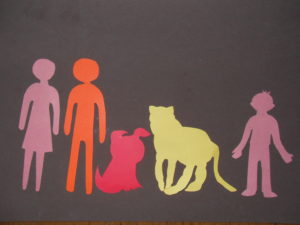Just Loved Reading:
The Royal Diaries: Catherine, the Great Journey
Middle Grade Novel
Gregory, Kristiana. The Royal Diaries: Catherine, the Great Journey. New York: Scholastic, Inc., 2005
“I am a princess. All girls are; even if they live in tiny old attics, even if they dress in rags, even if they aren’t pretty or smart or young, they’re still princesses.”
Sophie Augusta Fredericka is a minor princess, the daughter of Prince Christian August of Anhalt-Zerbst and Princess Johanne Elizabeth of Holstein-Gottrop.
Princess Sophie displayed a lively adventurous intelligence early in life as well as an argumentative spirit. The latter trait would suit her later in life.
Johanne Elizabeth’s family was related to the imperial family of Russia through marriage. When Peter the Great died without declaring a successor, his daughter Elizabeth took over as ruler and named Karl Peter Ulrich of Holstein-Gottrop, son of her younger sister as her heir.
Sophie’s mother lobbied to arrange a marriage between her daughter and the newly renamed Grand Duke Peter. In 1744, Princess Sophie and her mother traveled to Russia. In St. Petersburg, Sophie met with the royal court and moved on to Moscow where she met the Empress Elizabeth. She made the right impression.
Sophie converted to the Russian Orthodox faith and we renamed Ekaterina Alexeyevna.
The next day she became engaged to Peter. They were married on August 21, 1745 in the Church of the Virgin of Kazan in St. Petersburg.
She was only 17 years old and on her way to becoming Catherine the Great.
WHY I LOVED READING THIS BOOK:
It was fascinating to read of the transformation of Princess Sophie into Empress Catherine although the novel stops short of detailing her long reign. What struck me about the life of Catherine/Sophie was the sheltered life she led as have so many other princesses. She was tutored in various academic subjects and learned French and the refinements of the French court yet she was sheltered from the political intrigues (although it is likely she heard about them). She learned the fundamentals of Lutheranism. When she was a child, she was forced to wear a brace for four years which certainly taught her fortitude.
Inspite of her pampered life, she left her old life behind and embraced the culture and religion of Russia. She also learned to successfully maneuver the political intrigues of the Russian court and become Catherine the Great.
FOR FURTHER READING:
https://thelonelyplanet.com/russia
https://www.britannica.com/place/Russia
https:russiapedia.rt.com/russian-history












